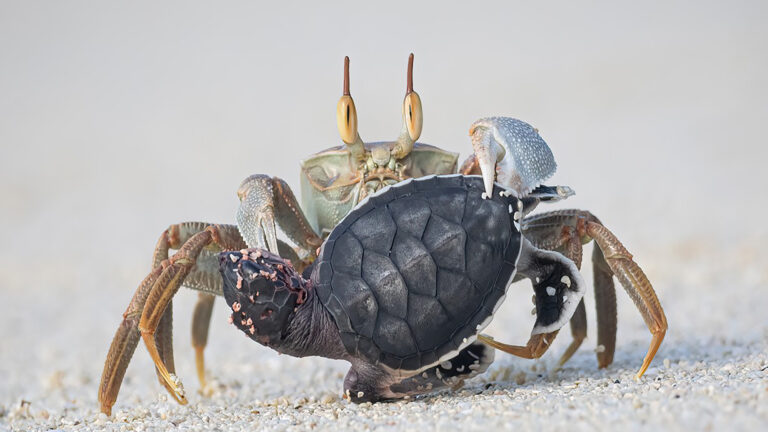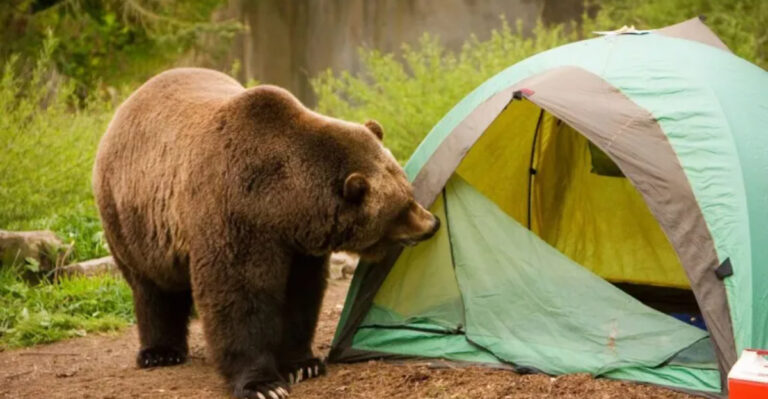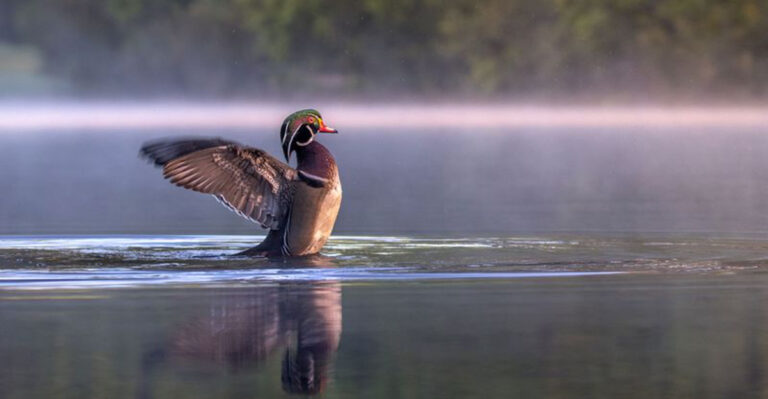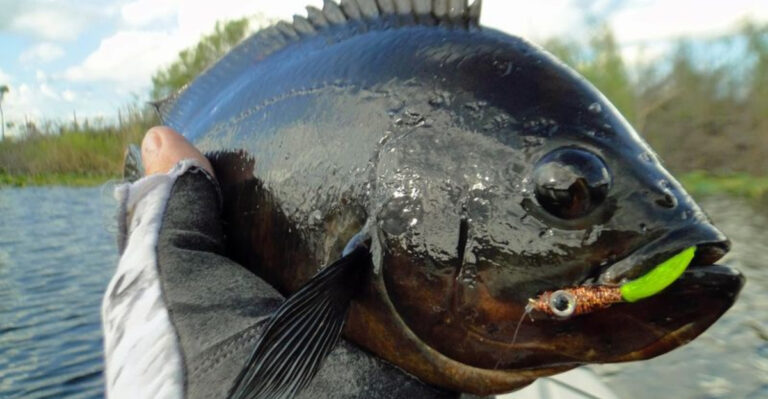30 Rare And Colorful Birds You Can Spot Only In The United States
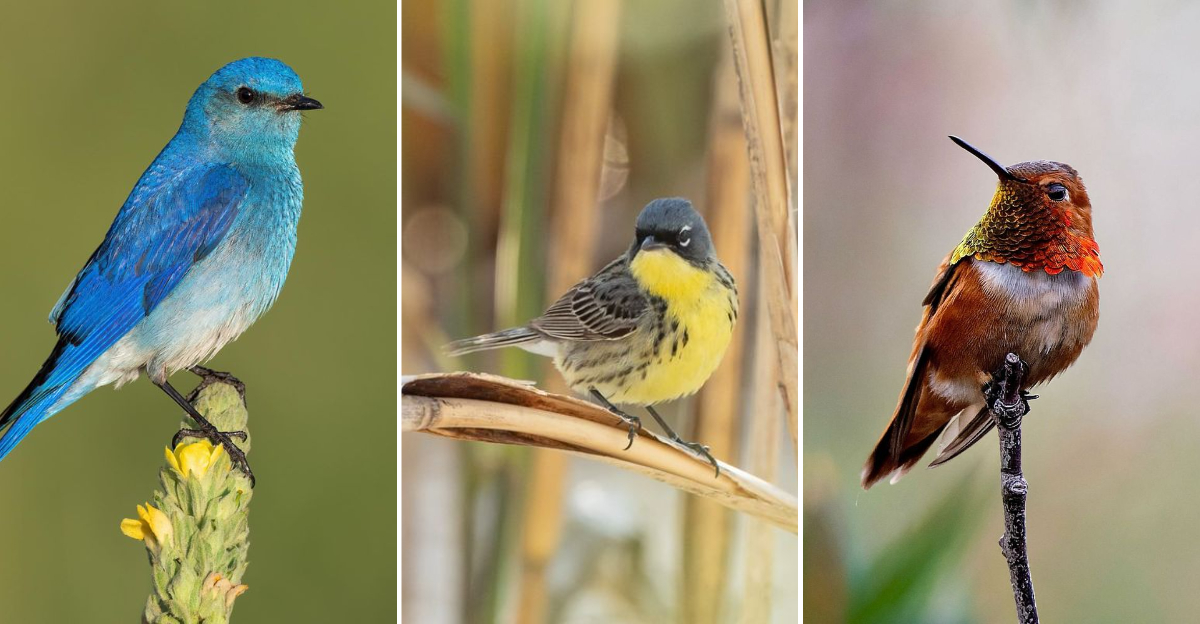
The United States is home to a stunning variety of rare and colorful birds that birdwatchers and nature enthusiasts alike will find captivating.
From the vivid Plumage of the Painted Bunting to the majestic presence of the California Condor, each species offers a unique glimpse into the diverse avian life found only within U.S. borders. We’ll explore 30 such rare birds, celebrating their beauty and the unique characteristics that set them apart.
Whether you’re an avid birder or simply curious about wildlife, join us on this journey to discover these remarkable feathered gems found nowhere else in the world.
1. California Condor
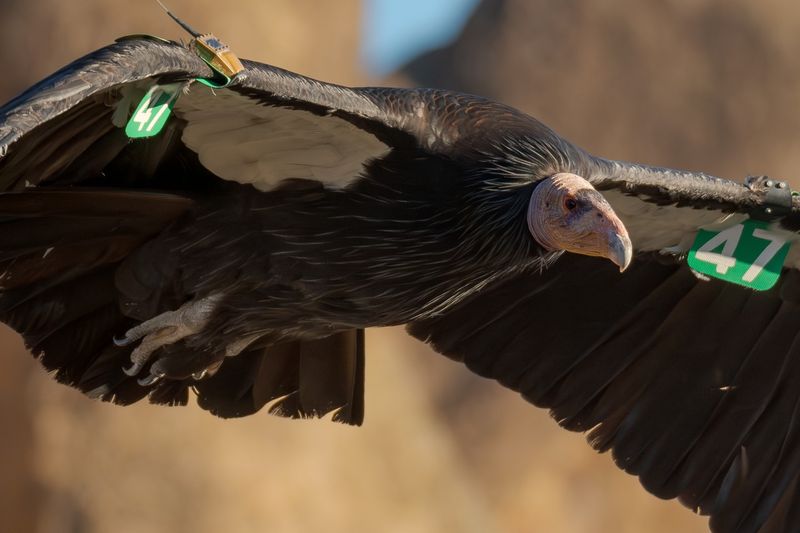
Soaring majestically over the canyons and coastal areas of the United States, the California Condor boasts one of the largest wingspans in the avian world.
This bird’s presence is not just about size, but also the striking contrast between its black feathers and the white underwing patches visible in flight. Historically, this bird was on the brink of extinction, but conservation efforts have brought it back from the edge.
While still rare, sightings in places like the Grand Canyon fill enthusiasts with awe. Observing a California Condor in its natural habitat is a testament to successful wildlife conservation. The bird’s distinctive bald, orange head and sharp eyesight equip it for scavenging, a crucial role in its ecosystem.
Birdwatchers visiting the American Southwest can witness these birds soaring against vast canyon backdrops, an experience that emphasizes the importance of preserving such species.
2. Painted Bunting
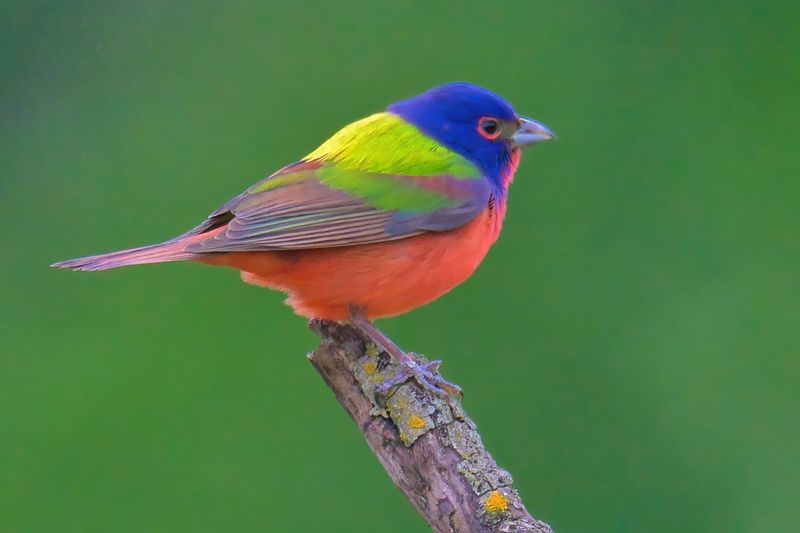
In the heart of the southern U.S., the Painted Bunting can be found flitting through dense forests and brush. Its striking colors make it one of the most beautifully adorned birds in America. The male, in particular, showcases a vibrant mix of blue, green, and red, resembling a flying rainbow.
These buntings prefer habitats that offer both dense cover and open areas for foraging. Their diet consists mainly of seeds and insects, making them frequent visitors to backyard feeders in rural areas. Their colorful presence and sweet, melodic song add vibrancy to the American countryside.
During breeding season, the Painted Bunting’s song is a common sound in its habitat range. Birdwatchers treasure these sightings, often traveling to key spots like the coastal Carolinas to catch a glimpse of these elusive birds. The Painted Bunting is truly a jewel among America’s native bird species.
3. Kirtland’s Warbler
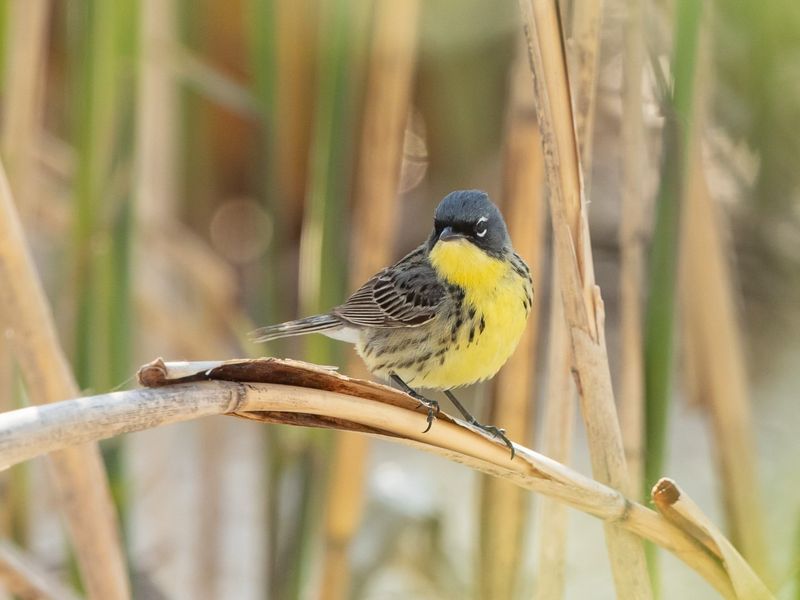
The Kirtland’s Warbler is a beacon of hope in conservation circles, as it was once considered one of the rarest birds in North America. Found primarily in Michigan, this warbler thrives in young jack pine forests, its preferred breeding habitat.
The bird’s striking yellow belly and blue-gray upperparts are distinctive and enchanting. Efforts to preserve its habitat have seen the warbler’s population increase, but sightings remain a treasured event for bird enthusiasts.
The specific habitat requirements mean that Kirtland’s Warbler sightings are often confined to select areas, making them a sought-after target for birdwatching trips. The melodious song of the Kirtland’s Warbler fills the air during the breeding season, contributing to its allure.
For those fortunate enough to witness it, the warbler is a symbol of successful, sustained conservation efforts. Its resilience and beauty continue to inspire bird lovers and conservationists alike.
4. Vermilion Flycatcher
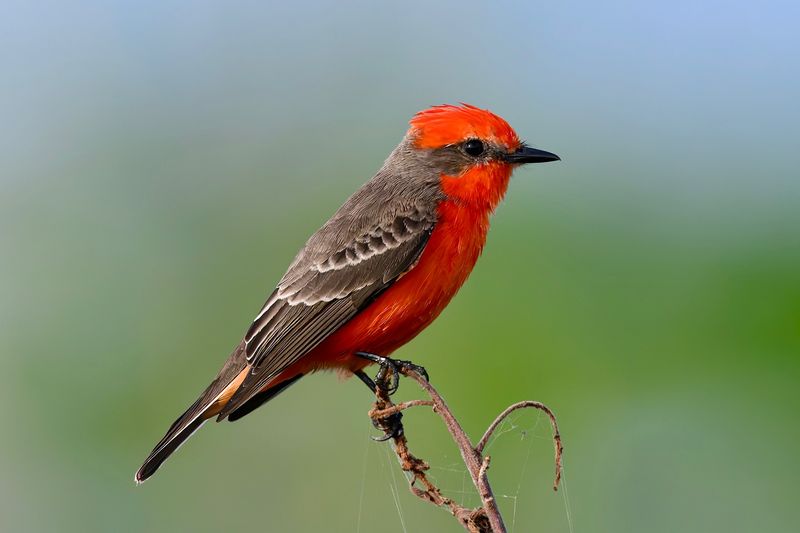
The Vermilion Flycatcher is a striking addition to the birdlife of the American Southwest. With its brilliant red plumage and contrasting dark wings and tail, the male flycatcher is a vivid spectacle against the muted tones of desert landscapes.
Inhabiting arid regions, this bird can often be found perched conspicuously on branches, catching insects mid-air with remarkable agility. Their presence is a welcome burst of color in otherwise sparse environments, making them a favorite among birdwatchers visiting the deserts of Arizona and New Mexico.
Their unique flycatching behavior, which includes swooping and hovering to catch prey, is entertaining to observe. As habitats across the U.S. face environmental pressures, sightings of the Vermilion Flycatcher serve as a reminder of the delicate balance within ecosystems and the importance of preserving these vibrant species.
5. Roseate Spoonbill
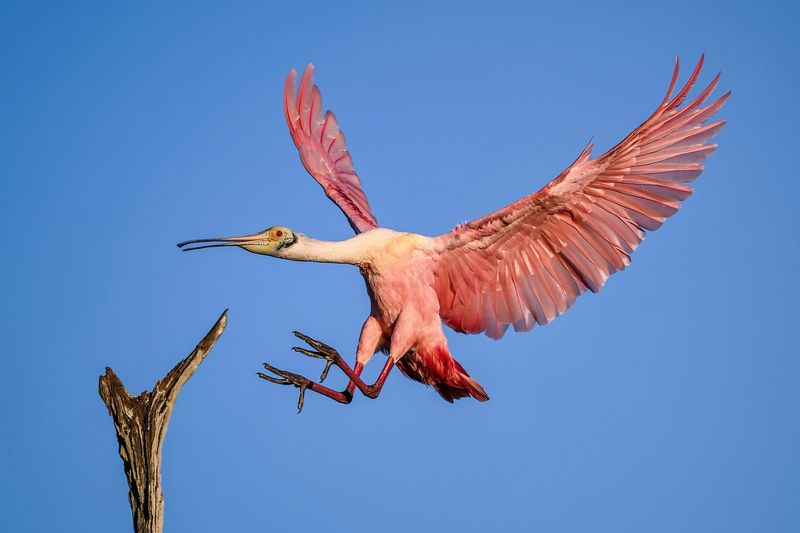
Gracing the wetlands of Florida and the Gulf Coast, the Roseate Spoonbill is a sight to behold. This bird’s striking pink color and distinctive spoon-shaped bill make it unmistakable as it wades through shallow waters.
The Roseate Spoonbill’s diet of crustaceans and small fish contributes to its coloration, a beautiful blend of pinks and whites. These birds are often seen in groups, moving methodically through marshes as they feed.
Their presence is a treat for birdwatchers and photographers alike, offering a glimpse of nature’s artistry. Apart from their beauty, Roseate Spoonbills play a vital role in their ecosystems, controlling fish populations.
Conservation efforts continue to protect these habitats, ensuring that future generations can enjoy the visual splendor of these unique birds. Their presence serves as both an ecological indicator and a vibrant splash of color in America’s wetlands.
6. Scarlet Tanager
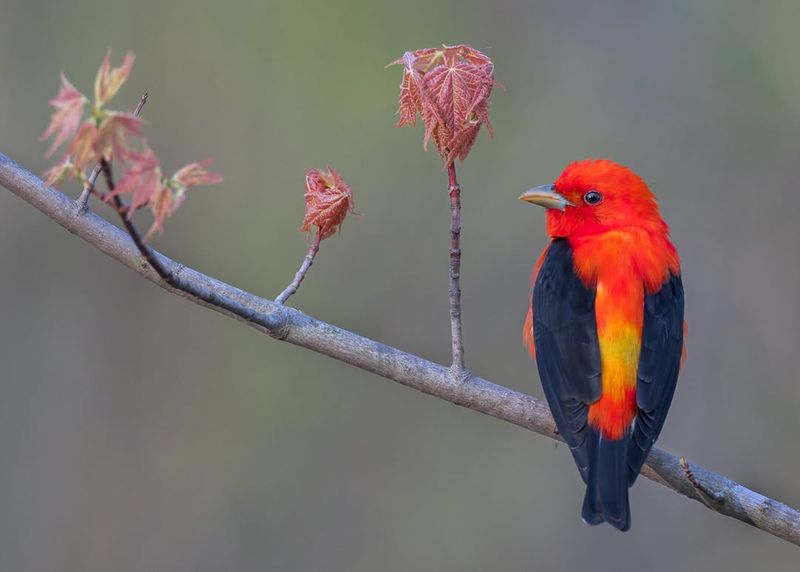
With a flash of red among the green leaves, the Scarlet Tanager makes its presence known in the deciduous forests of the eastern United States. The male’s vivid red body and contrasting black wings and tail are a striking sight during the summer months.
This bird is often heard before it is seen, with its distinctive, raspy song echoing through the trees. Scarlet Tanagers prefer mature forests with a dense canopy, where they feed primarily on insects and fruits. Their preferred habitats are becoming increasingly limited, but conservation efforts are helping ensure their survival.
Birdwatchers eagerly anticipate the tanager’s arrival each spring, marking a highlight in the birdwatching calendar. Their brilliant coloration and melodic songs bring life to the forests, offering a rewarding experience for those exploring America’s eastern woodlands. Observing a Scarlet Tanager is a captivating moment, one that underscores the beauty and diversity of North American birdlife.
7. American Avocet
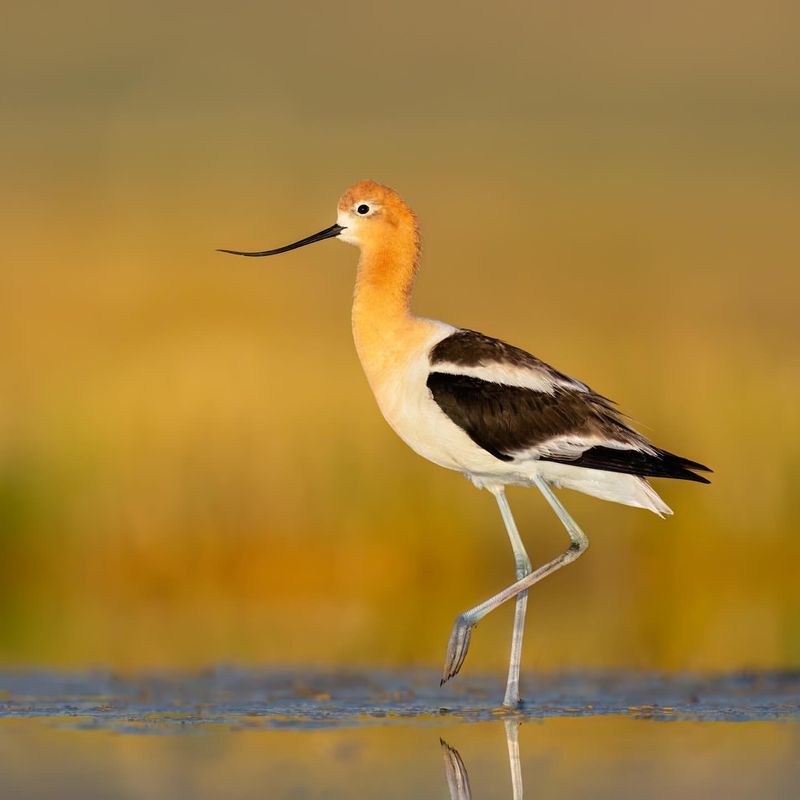
The American Avocet, with its elegant profile and graceful movements, is a striking sight along the shorelines of the western United States. This bird is easily recognized by its long, thin upturned bill and distinctive rusty-colored neck and head during the breeding season.
Avocets are often found in shallow waters, sweeping their bills side-to-side to capture small crustaceans and insects. Their unique feeding technique is both fascinating and efficient, allowing them to thrive in a variety of wetland habitats.
These birds are social creatures, often seen in flocks that move in unison across the water. Birdwatchers cherish encounters with American Avocets, as their presence signifies healthy wetland ecosystems. Efforts to preserve these habitats are vital to ensure the continued survival of this and other shorebird species, whose beauty and grace enrich the tapestry of American wildlife.
8. Black Skimmer
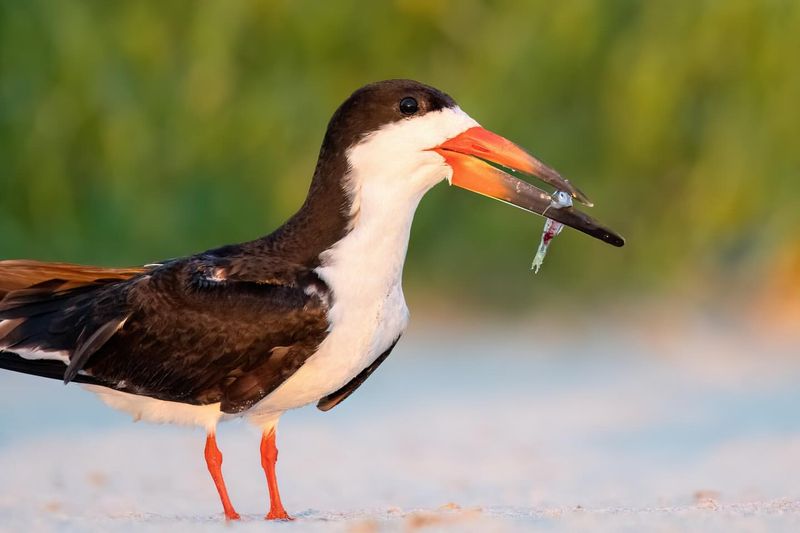
Skimming the surface of coastal waters with precision, the Black Skimmer is an avian marvel found along the Atlantic and Gulf coasts. Its unique foraging technique involves flying low over the water with its elongated lower mandible slicing through the surface.
This bird’s striking black and white plumage and bright red bill make it easily recognizable. As it glides effortlessly over the waves, the Black Skimmer provides a mesmerizing display of agility and adaptation. Observing these birds in action is a highlight for those exploring coastal regions.
Their nesting sites, often on sandy beaches, are vulnerable to human disturbance and rising sea levels. Conservationists work tirelessly to protect these areas, ensuring that the Black Skimmer continues to grace America’s shorelines. Encounters with this extraordinary bird offer a glimpse into the complexities of avian life and the delicate balance of coastal ecosystems.
9. Elegant Tern
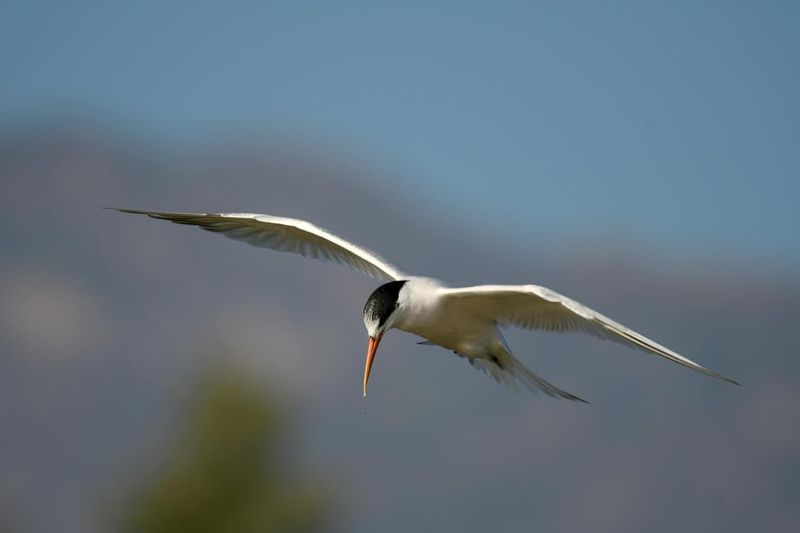
The Elegant Tern is a sleek and agile seabird, often seen diving with precision into the waters of the Pacific Coast. Its slender body, long orange bill, and striking black cap make it a distinctive presence among the flocks of seabirds.
This tern breeds in large colonies on isolated islands, where its nesting sites are protected from predators and human interference. Their synchronized dives into the ocean are a sight to behold, as they expertly hunt for fish in the crashing waves.
Birdwatchers flock to coastal areas, hoping to witness these elegant birds in action. The Elegant Tern is a testament to the beauty and diversity of America’s avian life, highlighting the need to preserve coastal habitats. Their presence is a reminder of the rich biodiversity found along the country’s shores, urging continued conservation efforts.
10. Wilson’s Phalarope
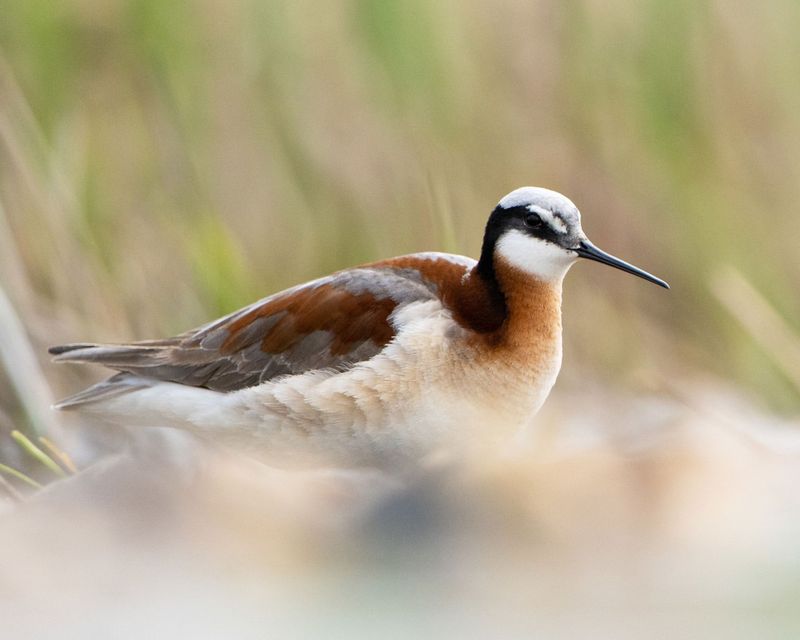
In the expansive prairie wetlands of the northern United States, Wilson’s Phalarope can be observed engaging in its unique and fascinating feeding behavior.
This small shorebird spins rapidly in the water, creating a vortex that brings food to the surface. This bird’s mottled brown and white plumage, along with its slender neck and long legs, make it well-suited for life in shallow ponds.
Unlike most bird species, the female is more brightly colored than the male, playing an active role in courtship and territory defense. Birdwatchers and nature photographers are often captivated by the phalarope’s spinning dance, a behavior that is as practical as it is mesmerizing.
Protecting their breeding grounds is crucial to maintaining the populations of Wilson’s Phalarope, ensuring that future generations can enjoy these charming birds and the unique habitats they occupy.
11. Rufous Hummingbird
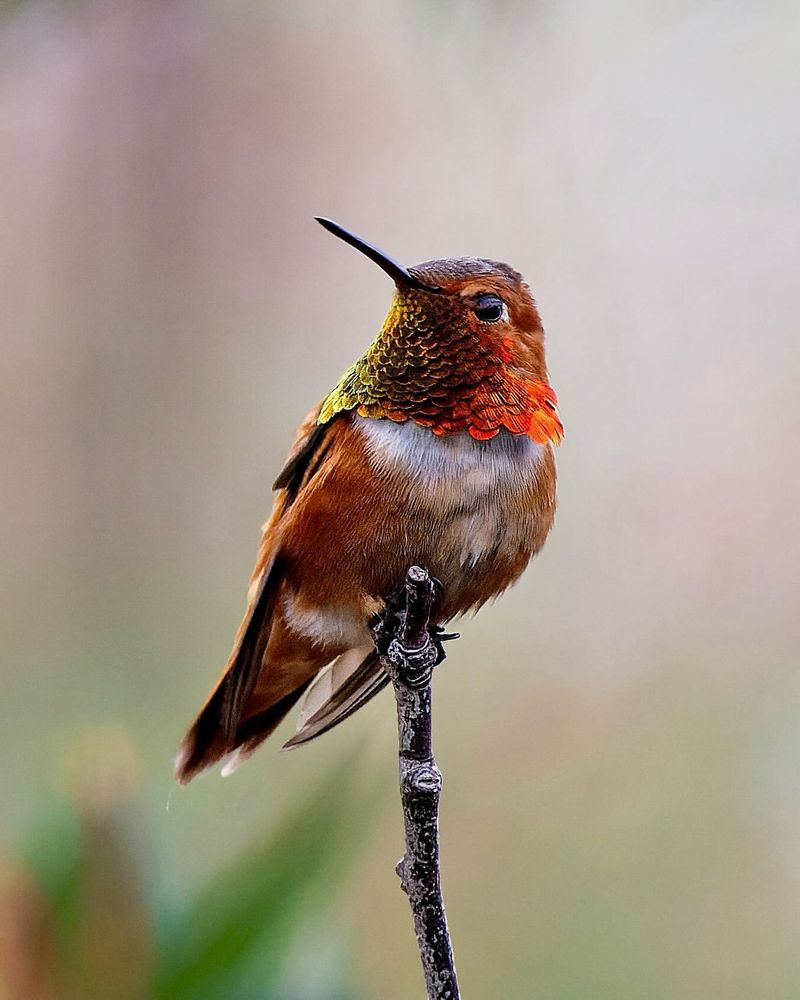
The Rufous Hummingbird, with its fiery orange plumage and remarkable agility, is a jewel of the American West. Known for its long migratory journey from Mexico to as far north as Alaska, this tiny bird is a marvel of endurance and navigation.
Despite its small size, the Rufous Hummingbird is fiercely territorial, often seen chasing away larger birds from nectar-rich flowers. Their vibrant color and rapid wingbeats make them a captivating sight in gardens and wildflower meadows.
Bird enthusiasts and gardeners alike cherish the presence of these hummingbirds in the US, planting flowers specifically to attract them.
Their adaptability to different environments highlights the importance of preserving diverse habitats. Witnessing a Rufous Hummingbird in action is a reminder of nature’s wonders and the vibrant life that flourishes in America’s landscapes.
12. Red-Cockaded Woodpecker
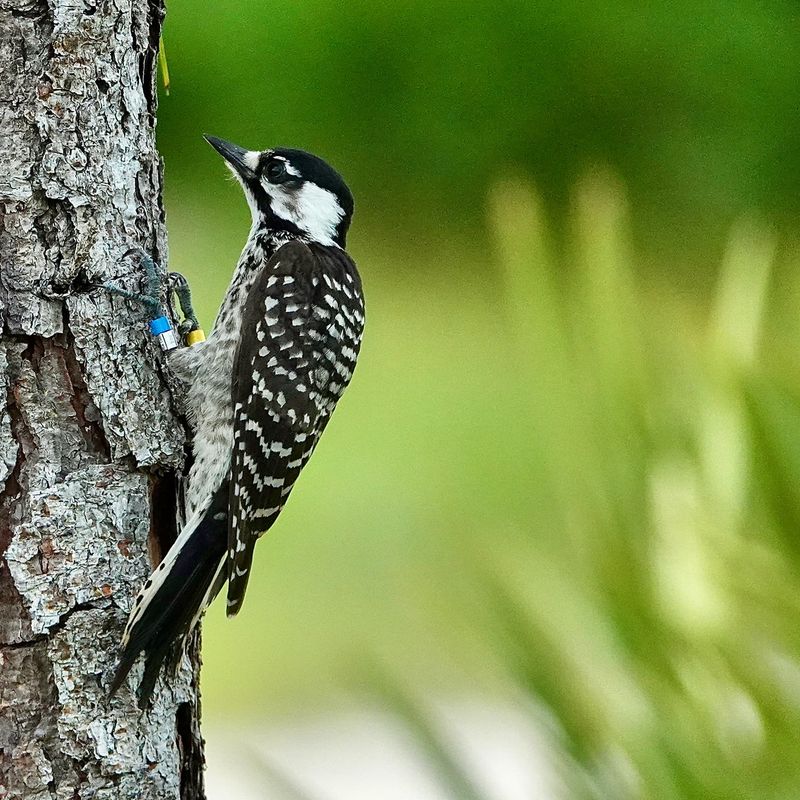
Deep within the mature pine forests of the southeastern United States, the Red-cockaded Woodpecker can be found carving out its home in living trees. This bird is unique in its preference for nesting in old-growth pines, a rare trait among woodpeckers.
The woodpecker’s distinctive black cap and white cheek patches make it easily identifiable. Conservation efforts have been crucial in preserving its habitat, as these specialized nesting sites are becoming increasingly rare due to logging and land development.
Birdwatchers visiting these pine forests are rewarded with the sight of these industrious birds, whose presence indicates a healthy, mature ecosystem.
Protecting the Red-cockaded Woodpecker is a testament to the importance of safeguarding specific habitats to ensure the survival of specialized species, enriching biodiversity.
13. Greater Sage-Grouse
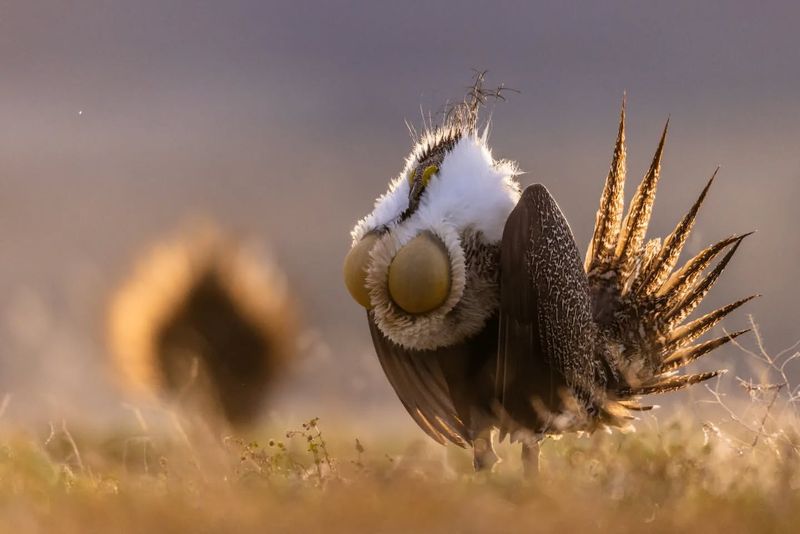
In the vast sagebrush plains of the western United States, the Greater Sage-Grouse performs one of nature’s most remarkable courtship displays. The male’s fan-like tail and yellow air sacs are central to its elaborate mating dance, a spectacle that draws wildlife enthusiasts from all over.
These birds rely heavily on sagebrush habitats for survival, feeding on the plants and using the cover for protection. Unfortunately, these habitats are under threat from land use changes and environmental pressures, placing the Greater Sage-Grouse at risk.
Efforts to conserve these landscapes are vital for the preservation of this iconic bird. Witnessing a sage-grouse display is a reminder of the unique behaviors adapted by wildlife and the ongoing need to protect the environments they depend on. This bird’s presence is emblematic of the American West’s natural heritage.
14. Burrowing Owl
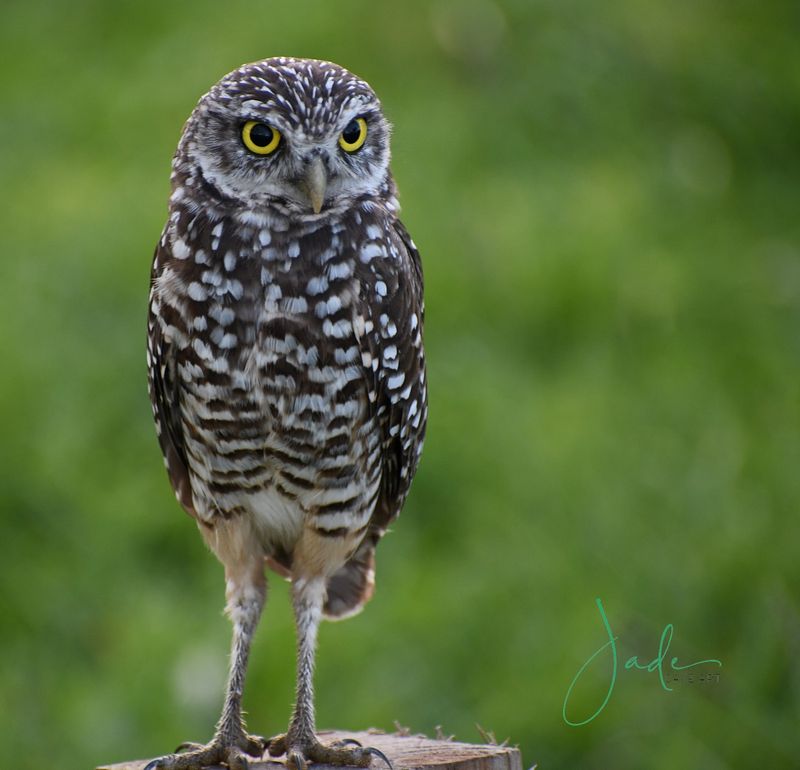
Among the open grasslands and deserts of the western U.S., the Burrowing Owl presents a delightful sight with its curious gaze and active lifestyle. Unlike most owls, this species nests in burrows, often taking over those abandoned by prairie dogs or other mammals.
The owl’s bright yellow eyes and distinctive white eyebrows add to its expressive appearance. These owls are often active during the day, making them more visible to birdwatchers compared to their nocturnal relatives.
Their diet consists mainly of insects and small vertebrates, which they hunt with precision. Conservationists work diligently to protect the habitats of these ground-dwelling owls, ensuring that grasslands remain a refuge for this and other species.
The Burrowing Owl’s charming demeanor and unique habits make it a favorite among birders and an important indicator of healthy grassland ecosystems.
15. Mountain Bluebird
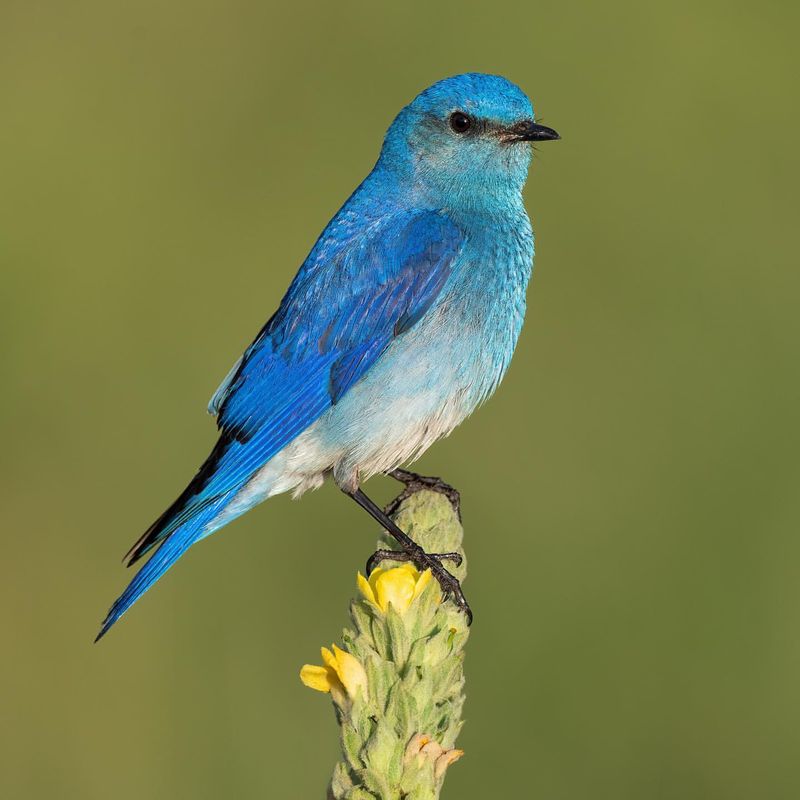
The Mountain Bluebird, with its dazzling sky-blue feathers, brightens the open fields and alpine meadows of the western United States. Its vibrant color and gentle presence have made it a symbol of the wide, open spaces it inhabits.
These blue birds are often seen perched on fence posts or low branches, scanning the ground for insects. Their diet, which includes a variety of invertebrates and berries, reflects their adaptability to different environments.
They are a welcome sight for those exploring America’s rugged landscapes. Conservation efforts have focused on maintaining open habitats and nesting sites for these beautiful birds.
Observing a Mountain Bluebird in flight is a moment of serenity, highlighting the natural beauty found within the nation’s diverse ecosystems. Birdwatchers and nature lovers cherish these encounters, inspired by the bluebird’s grace and charm.
16. Ivory-Billed Woodpecker
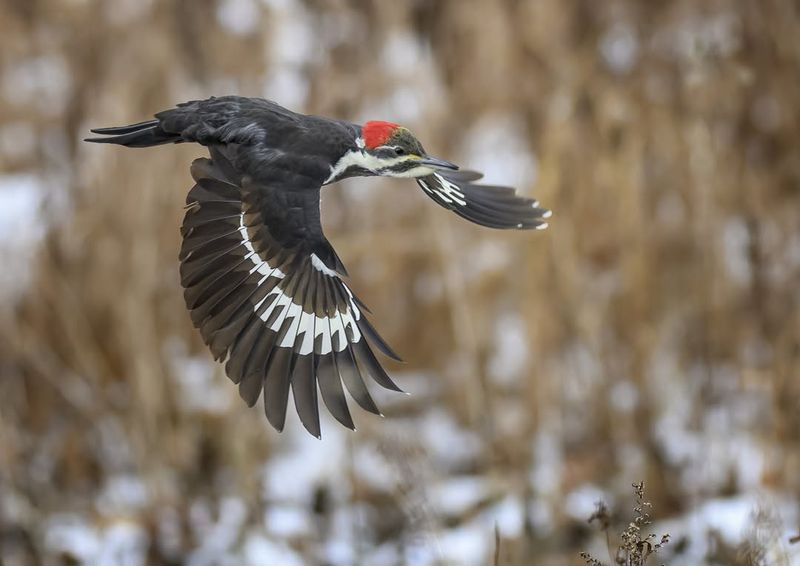
The Ivory-billed Woodpecker, often dubbed the “Holy Grail” of birdwatching, is a symbol of mystery and hope. Thought to be extinct, sporadic sightings have kept the search alive in the swampy forests of the southeastern United States.
This large woodpecker’s glossy black and white plumage, combined with its striking ivory bill, makes for a dramatic appearance. Its drumming echoes through the forests, even as it eludes definitive confirmation of its existence.
Conservationists are committed to preserving the swamp habitats that could support this elusive bird. The quest to find the Ivory-billed Woodpecker continues to inspire birdwatchers, representing the enduring allure of discovery and the importance of protecting biodiversity.
The possibility of its survival adds a layer of mystery to America’s natural heritage.
17. Western Tanager
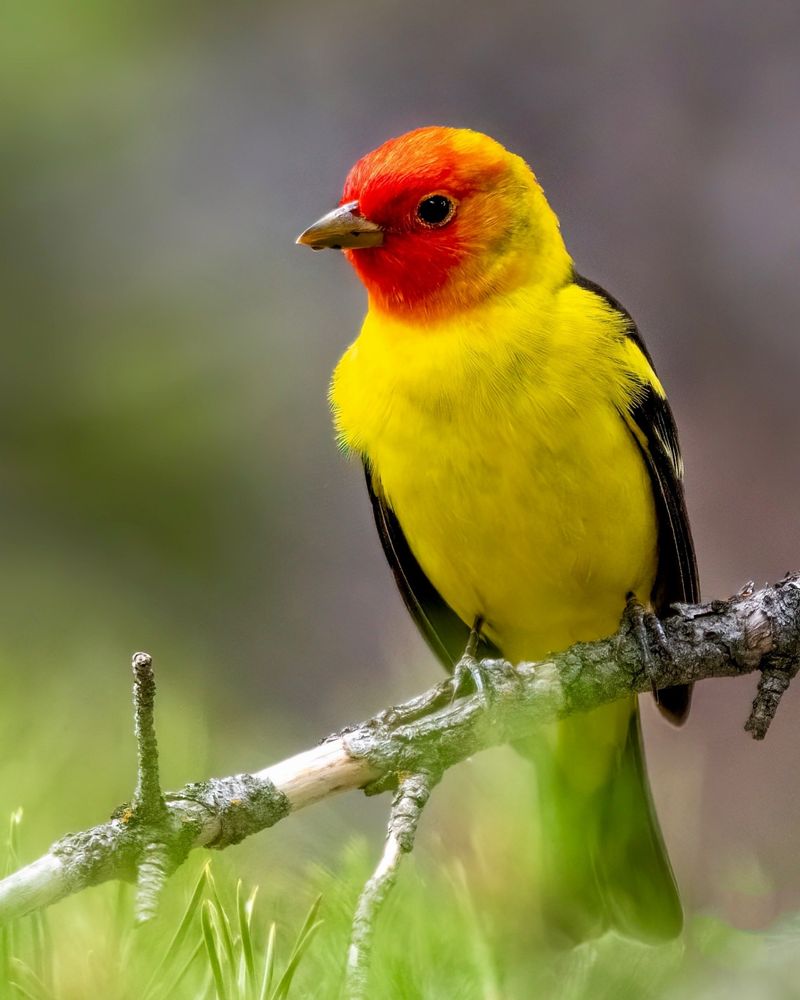
In the coniferous forests of the western United States, the Western Tanager adds a splash of color with its bright yellow body and contrasting red head. These birds migrate from Central America to breed in the northern U.S., delighting birdwatchers with their vibrant presence.
Their melodious song and striking appearance make them a favorite among those exploring mountainous regions. These tanagers feed on insects and fruit, often seen flitting through the canopy in search of food. Their presence is a reminder of the interconnectedness of ecosystems across continents.
Efforts to preserve forest habitats ensure that the Western Tanager continues to grace America’s landscapes. For bird enthusiasts, spotting this colorful bird is a highlight of any venture into the wild, a testament to the rich avian diversity found in the nation’s forests.
18. California Quail
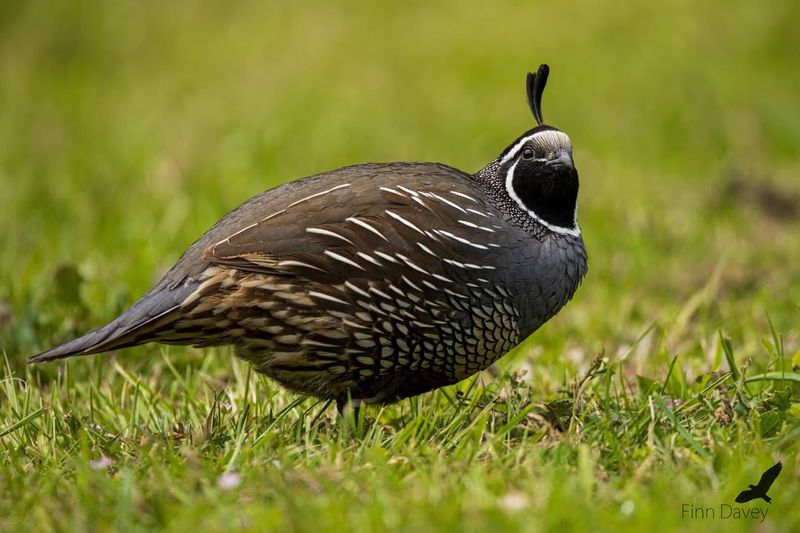
The California Quail, with its distinctive topknot and scaled belly, is a familiar and cherished resident of the American West. Often seen in coveys, these quails forage on the ground, moving with a charming bobbing gait through grasslands and chaparral.
These birds are well-adapted to a variety of habitats, from coastal regions to arid foothills, where they feed on seeds and insects. Their social nature and recognizable calls make them a popular subject for birdwatchers and nature enthusiasts.
Conservation efforts focus on habitat preservation and management to ensure these quails thrive. Spotting a California Quail in its natural environment provides a glimpse into the communal behaviors that characterize these birds, enriching one’s appreciation for the diversity and adaptability of wildlife. Their presence is a testament to the vibrant life of America’s varied landscapes.
19. Harlequin Duck
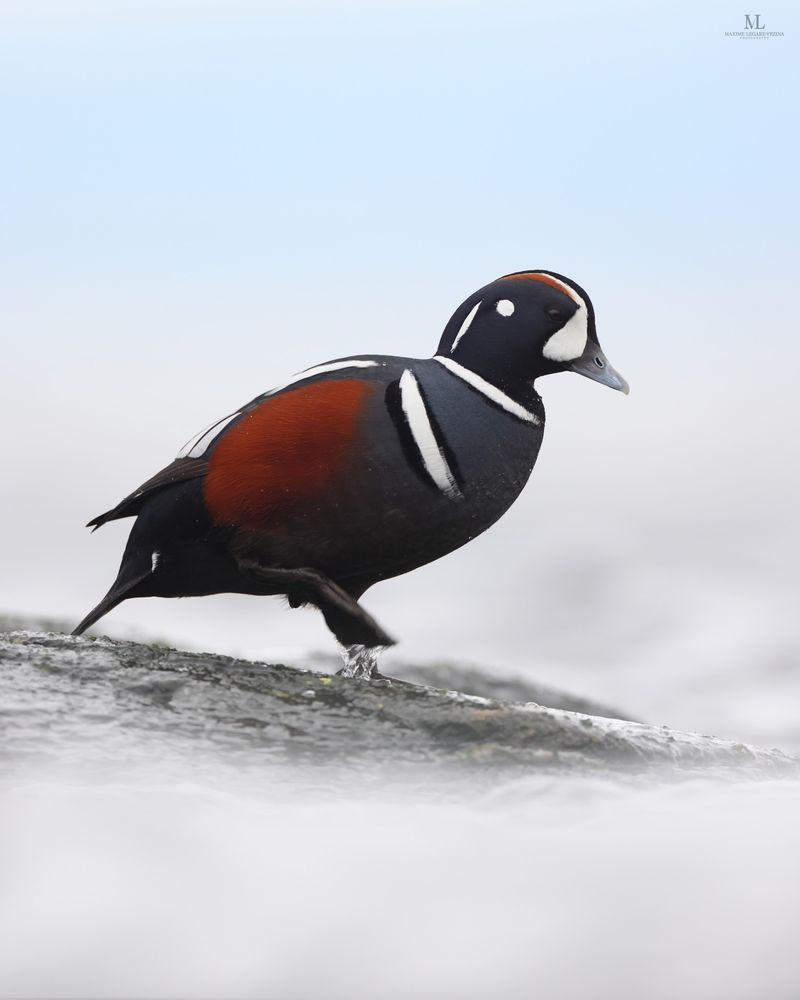
The Harlequin Duck, with its intricate pattern of blue, white, and rust colors, is a captivating sight in the fast-flowing rivers of the Pacific Northwest. This sea duck’s preference for turbulent waters sets it apart from its relatives, as it navigates the rapids with agility.
These ducks are often found in small groups, feeding on aquatic invertebrates. Their striking appearance and unique choice of habitat make them a fascinating subject for birdwatchers exploring mountainous and coastal regions.
Conservation efforts aim to protect the pristine river environments essential to the Harlequin Duck’s survival. Observing these ducks in their natural habitat is a special experience, highlighting the diverse adaptations of avian life to challenging environments. Their presence enriches the tapestry of wildlife within America’s rugged landscapes.
20. Bald Eagle
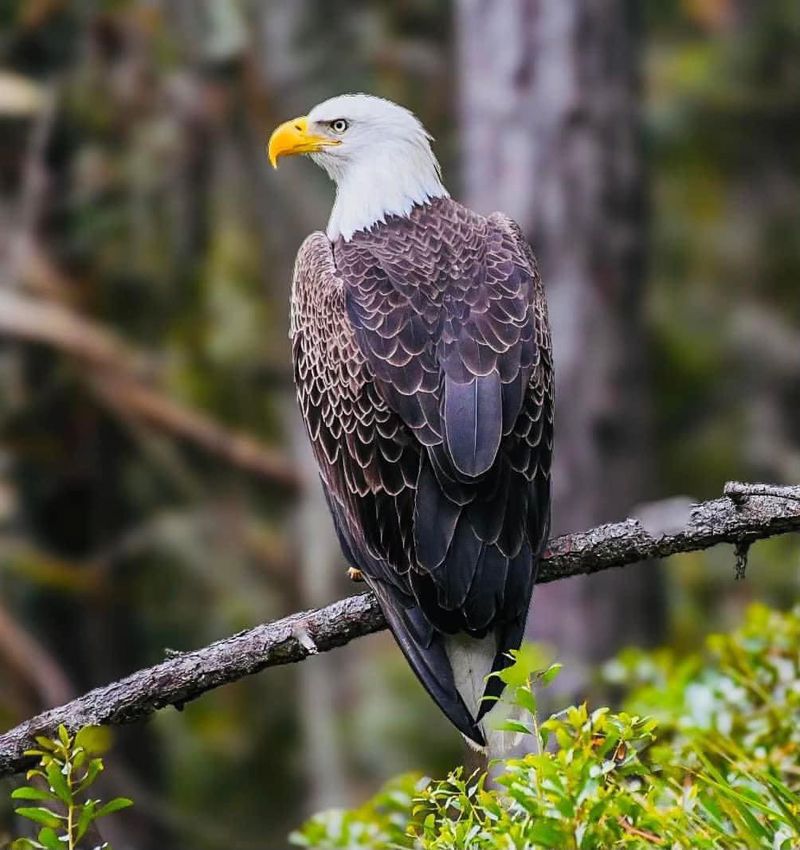
A symbol of strength and freedom, the Bald Eagle holds a revered place in the wildlife of the United States. With its striking white head and tail feathers contrasting against a dark brown body, this bird of prey is an iconic sight along rivers and lakes.
Once endangered due to hunting and pesticide use, Bald Eagles have made a triumphant recovery thanks to conservation efforts. Their nests, often located in tall trees near water, provide a vantage point for hunting fish and other prey.
Birdwatchers and nature lovers thrill at the chance to see these majestic birds in flight, their powerful wings creating an unforgettable sight. The Bald Eagle’s resurgence is a testament to the success of wildlife protection efforts and a symbol of national pride, embodying the spirit of America’s natural heritage.
21. Peregrine Falcon
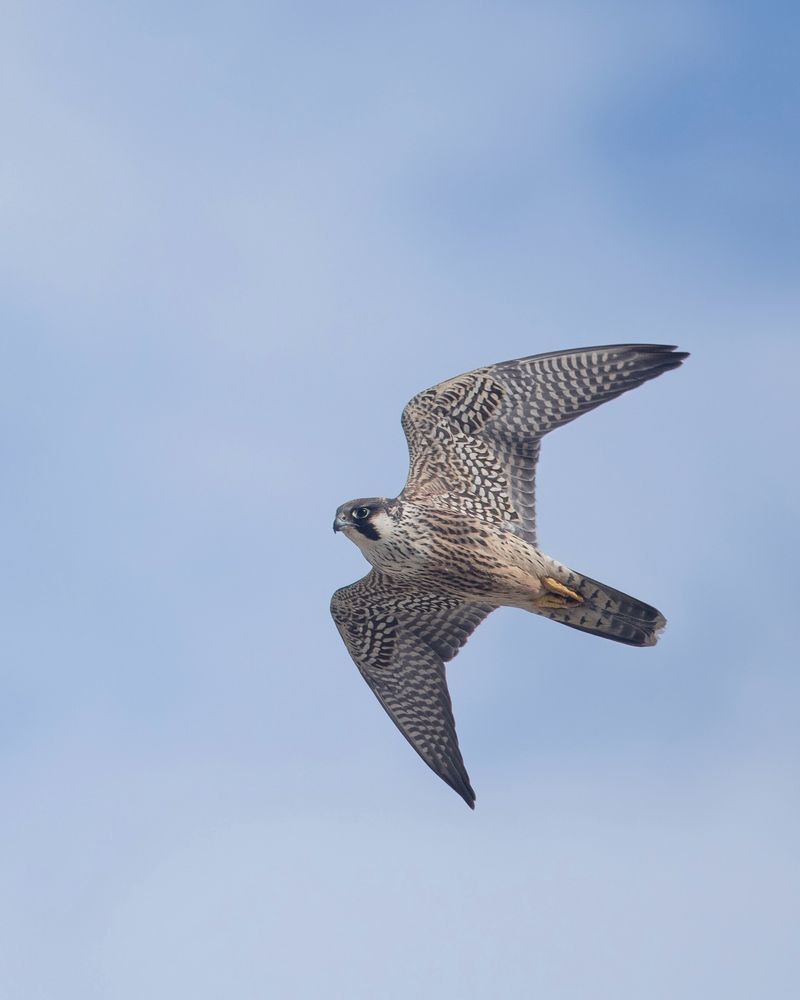
Renowned for its remarkable speed, the Peregrine Falcon is a master of aerial hunting, often diving at speeds exceeding 200 miles per hour. This bird’s agility and precision make it one of the most formidable predators in the avian world.
Peregrine Falcons are found across a variety of habitats, from urban skyscrapers to remote cliff faces. Their adaptability and hunting prowess have led to a successful recovery from the brink of extinction, following significant conservation efforts.
Spotting a Peregrine Falcon in its natural environment is a thrilling experience, showcasing the power and elegance of these apex predators. Their presence underscores the importance of protecting diverse habitats, ensuring that future generations can witness the spectacular flight of the world’s fastest bird.
22. Clapper Rail
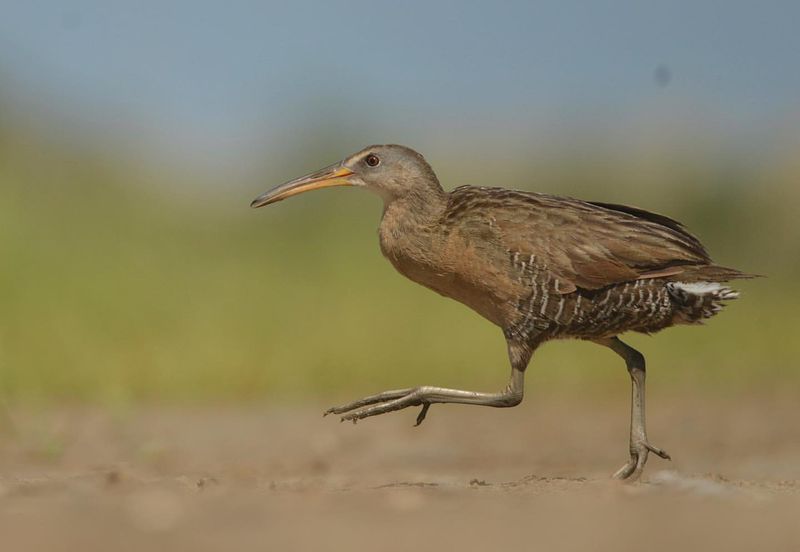
In the dense salt marshes along the Atlantic and Gulf coasts, the Clapper Rail is a master of camouflage. Its gray and brown plumage blends seamlessly into the grassy landscape, making sightings a rewarding challenge for birdwatchers.
This secretive bird is more often heard than seen, with its distinctive clattering call echoing across the marshlands. Clapper Rails feed on a diet of crustaceans and small aquatic creatures, thriving in the rich, muddy environment.
Conservationists emphasize the importance of preserving wetland habitats to protect the Clapper Rail and other marsh-dwelling species. Spotting one of these elusive birds is a testament to the patience and perseverance of birdwatchers, offering a glimpse into the hidden lives of America’s coastal wildlife.
23. Swainson’s Hawk
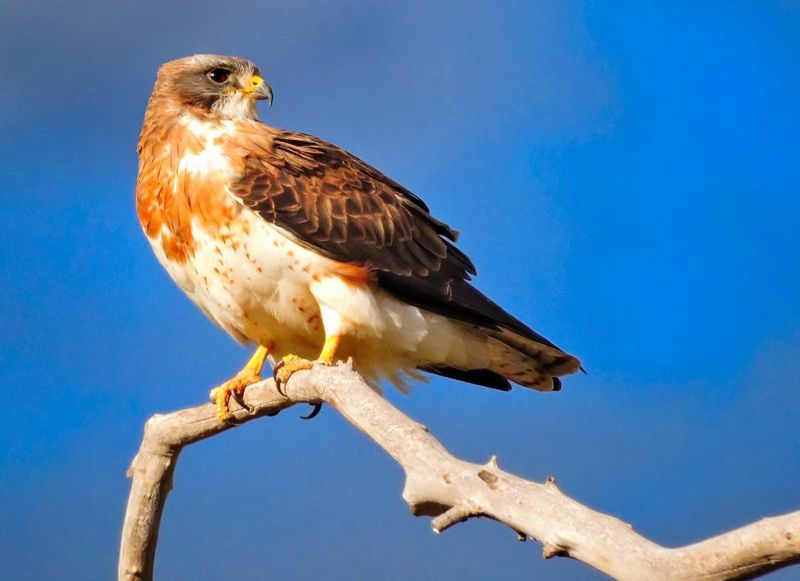
The Swainson’s Hawk is a striking bird of prey, often seen soaring over the vast prairies and open fields of the western United States. Its broad wings and distinctive two-tone pattern make it easily recognizable as it glides effortlessly through the sky.
This hawk is known for its long migratory journey, traveling from North America to South America each year. During migration, they gather in large flocks, creating a spectacular sight for those fortunate enough to witness their passage.
Conservation efforts focus on protecting the open landscapes critical to the Swainson’s Hawk’s survival. Birdwatchers and nature enthusiasts are drawn to the majesty of these raptors, whose presence enhances the wild beauty of the American prairies. Observing a Swainson’s Hawk in flight is a reminder of the interconnectedness of ecosystems across continents.
24. Snowy Plover
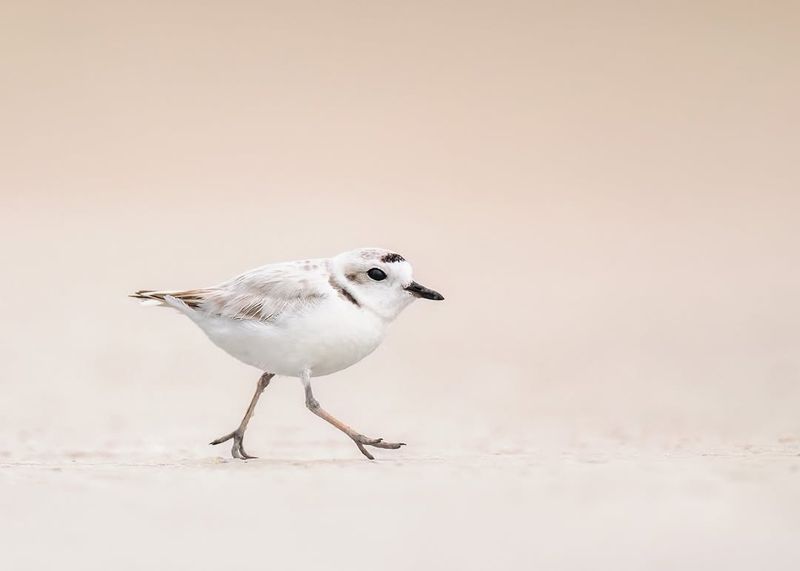
The Snowy Plover is a small shorebird that blends seamlessly with the sandy beaches it calls home. Found along the Pacific and Gulf coasts, these plovers are masters of disguise, their pale plumage camouflaging them against the sand.
These birds nest directly on the beach, making them vulnerable to human disturbance and habitat loss. Conservationists work tirelessly to protect nesting sites, ensuring the survival of this delicate species. Their presence is a vital indicator of healthy coastal ecosystems.
For beachgoers and birdwatchers, spotting a Snowy Plover is a special experience, offering a glimpse into the subtle beauty of shoreline life. Efforts to conserve their habitats are crucial, underscoring the importance of protecting coastal environments for future generations.
25. Great Gray Owl
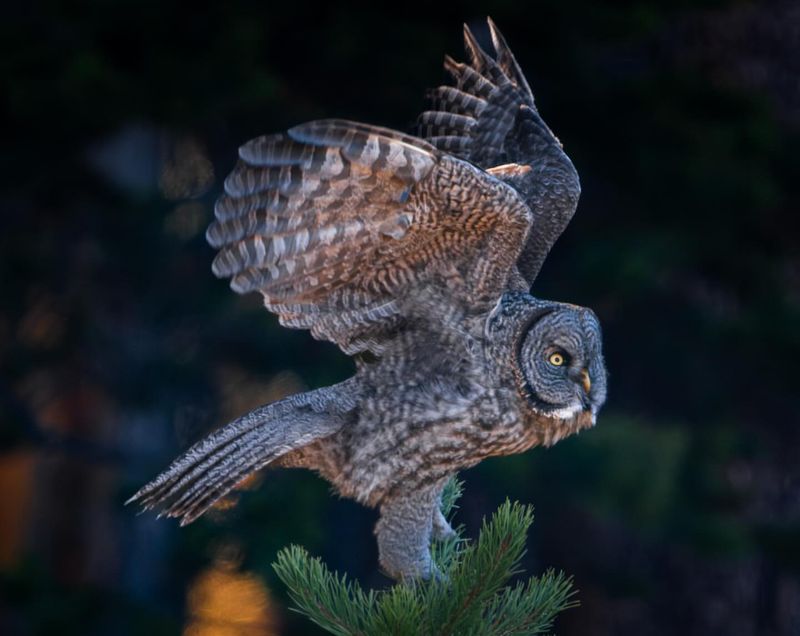
The Great Gray Owl, known for its ghostly appearance, haunts the dense boreal forests of the northern United States. Its large, rounded face and piercing yellow eyes create an enigmatic presence as it perches silently on snow-covered branches.
This owl is a masterful hunter, using its acute hearing to detect prey beneath the snow, showcasing remarkable patience and precision. Its silent flight and formidable hunting skills make it a fascinating subject for birdwatchers and photographers alike.
Great Gray Owls thrive in remote, undisturbed forests, where conservation efforts focus on preserving these pristine habitats. Observing one of these majestic birds in its natural environment is a rare and rewarding experience, highlighting the importance of protecting the wilderness areas they depend on.
26. Black-Billed Magpie
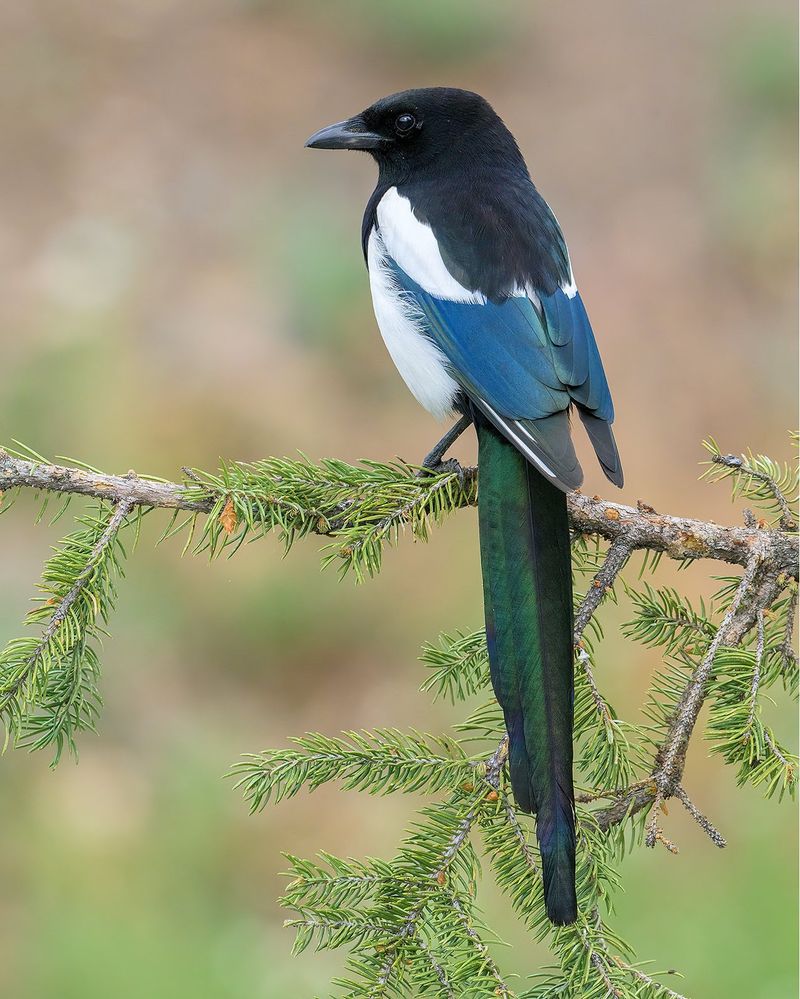
The Black-billed Magpie is a familiar sight in the open landscapes of the western United States, known for its striking black and white plumage and long, iridescent tail. These intelligent birds are often seen foraging on the ground or perched conspicuously in rural areas.
Magpies are highly social and vocal, engaging in complex behaviors that reflect their intelligence. They are opportunistic feeders, adapting to a variety of environments and diets. Their presence adds character to the landscapes they inhabit.
Conservation efforts highlight the importance of maintaining the diverse habitats that support magpie populations. Observing a Black-billed Magpie in its natural setting is a delight for birdwatchers, offering insight into the intricate social dynamics of avian life. Their adaptability and resilience make them a symbol of nature’s ingenuity.
27. Northern Cardinal
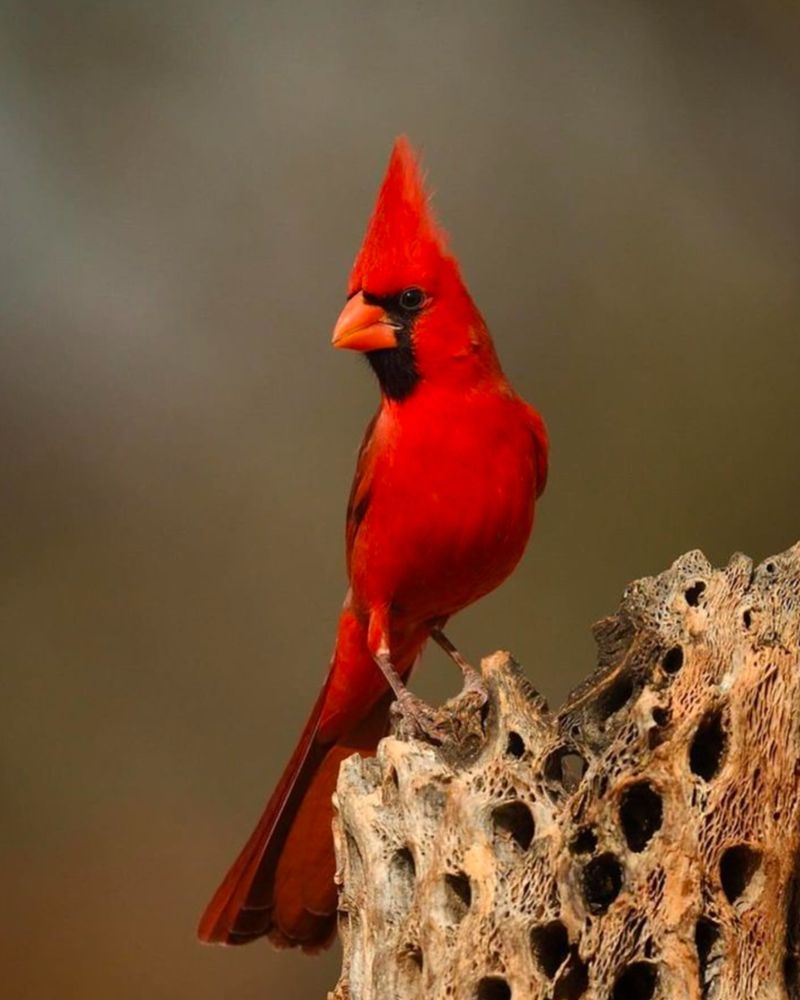
The Northern Cardinal, with its vibrant red plumage and distinctive crest, is a beloved resident of gardens and woodlands across the eastern United States. Its striking appearance and melodious song make it a favorite among birdwatchers and nature enthusiasts.
These birds are often seen perched in shrubs or trees, adding a splash of color to the landscape, especially against the stark backdrop of winter snow. Their diet includes seeds, fruits, and insects, reflecting their adaptability to various environments.
Conservation efforts ensure that cardinals continue to thrive, maintaining the natural beauty and diversity of their habitats. Spotting a Northern Cardinal is a joyful experience, symbolizing the vibrant life that persists even in the coldest months. Their presence enhances the charm of America’s gardens and forests.
28. Yellow-Headed Blackbird
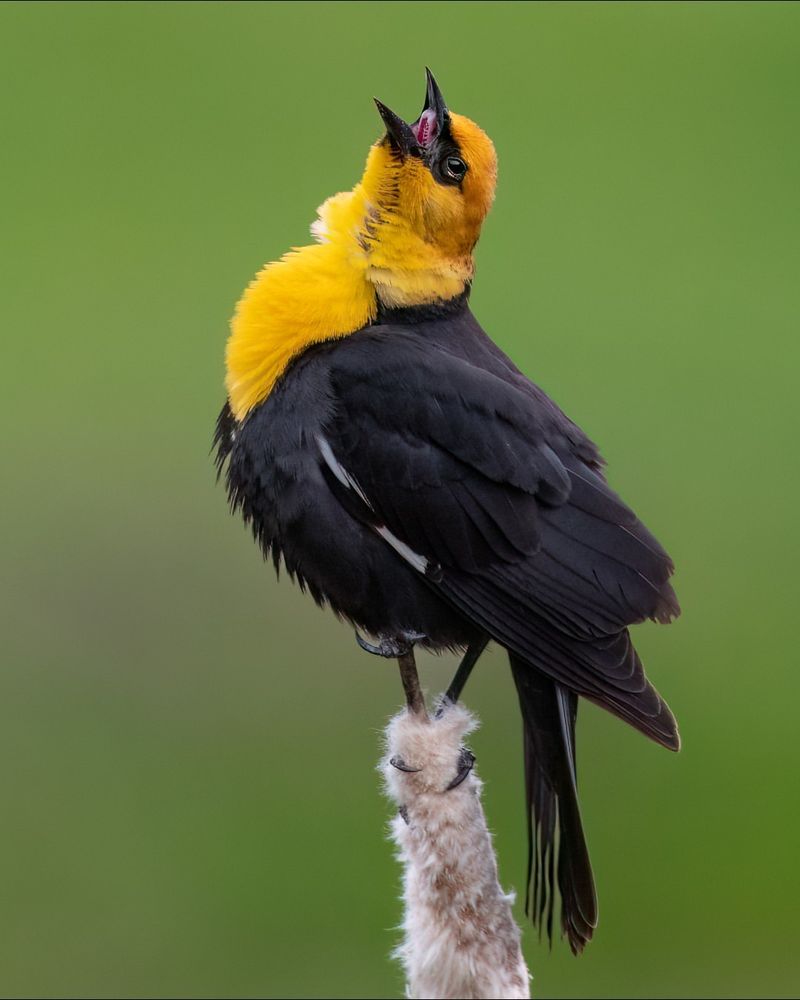
The Yellow-headed Blackbird is a striking inhabitant of marshes and wetlands in the western and central United States. Its vibrant yellow head and contrasting black body make it a standout among the reeds. These birds are often found in large flocks, their distinctive calls echoing across the marshes.
They feed on insects and seeds, thriving in wetland environments that support a rich diversity of life. Conservation efforts focus on preserving these crucial habitats, ensuring that Yellow-headed Blackbirds and other marshland species continue to flourish.
Birdwatchers appreciate the opportunity to observe these colorful birds in their natural surroundings, adding to the vibrant tapestry of America’s avian life. Their presence is a testament to the beauty and diversity of wetland ecosystems.
29. Cedar Waxwing
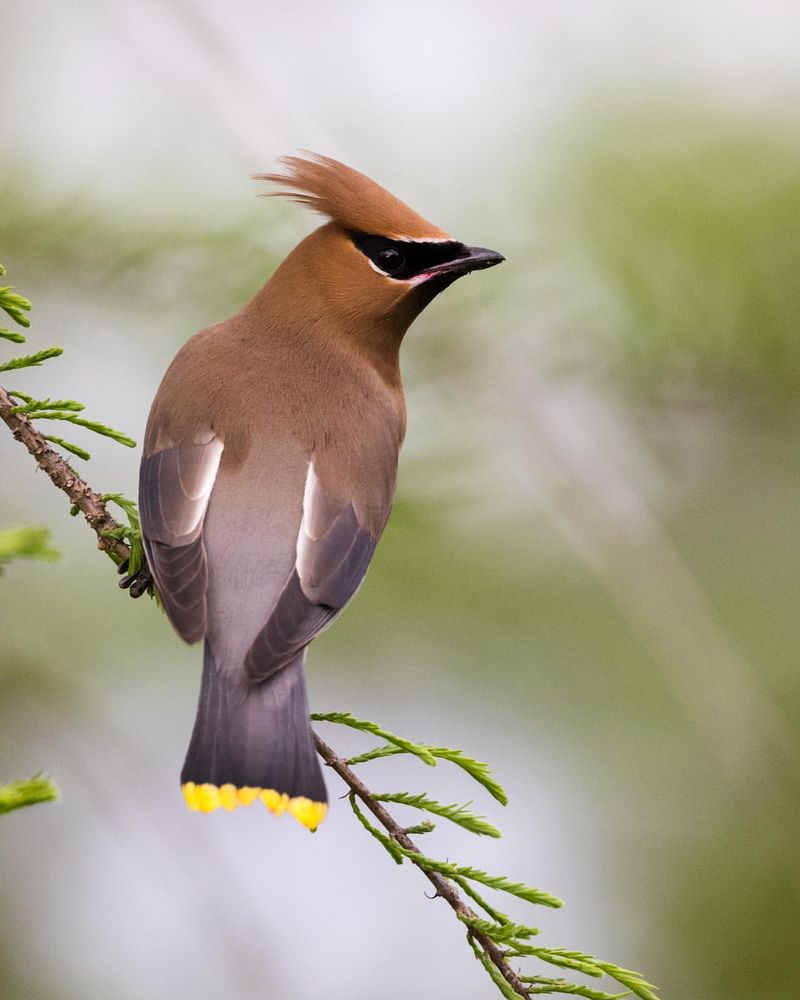
The Cedar Waxwing, with its sleek appearance and elegant markings, is a captivating sight in woodlands and gardens across the United States. This bird’s smooth brown and yellow plumage, accented by bright red wing tips, make it a favorite among birdwatchers.
Cedar Waxwings are highly social, often seen in flocks feasting on berries and fruits, which form the bulk of their diet. Their presence is a delight, bringing life and movement to the trees they inhabit.
Conservation efforts ensure that the habitats supporting these birds are preserved, maintaining the balance of ecosystems.
Observing a flock of Cedar Waxwings is a delightful experience, showcasing the social nature and beauty of these elegant birds. Their presence enriches the landscapes they grace with their vibrant colors and lively antics.
30. Eastern Meadowlark
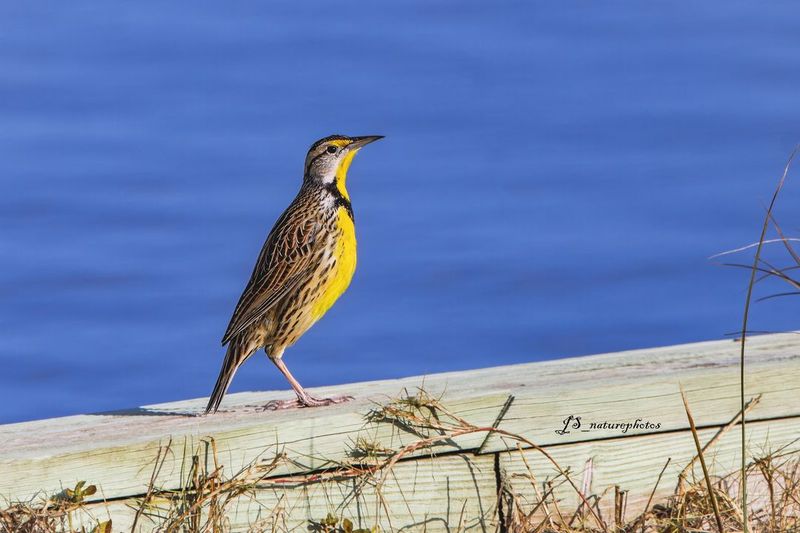
The Eastern Meadowlark is a melodious presence in the grasslands and farmlands of the eastern United States. Its bright yellow chest and distinctive black V-shaped collar make it easily recognizable as it perches prominently while singing.
These birds are ground foragers, feeding on insects and seeds, and they play a vital role in maintaining the health of their grassland habitats. Their cheerful song is a signature sound of the American countryside, marking the change of seasons.
Conservation efforts focus on preserving open landscapes that support meadowlark populations. Birdwatchers and nature lovers cherish the opportunity to hear and see these beautiful birds, whose presence exemplifies the harmony of rural ecosystems.
Observing an Eastern Meadowlark is a joyful reminder of the vibrant life that thrives in America’s fields and meadows.

